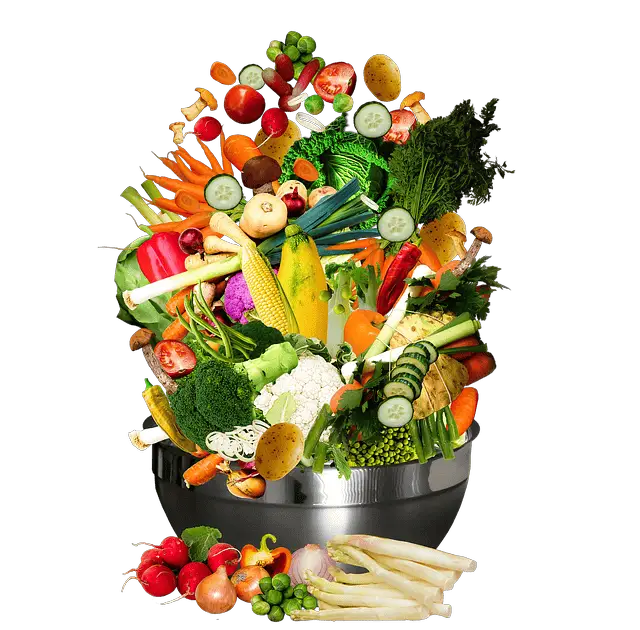In the realm of vegetarian and vegan cooking, spices play a crucial role in adding depth, complexity, and flavor to plant-based dishes. While many think of spice blends as primarily for meat-based recipes, they can actually be incredibly versatile and transformative in vegetarian and vegan cooking as well.
In this blog post, we’ll explore the exciting world of spice blends and discover how they can take your plant-based meals to new heights.
Understanding the Power of Spice Blends
Spices are the secret weapons in vegetarian and vegan cooking. They bring an explosion of flavors, aromas, and textures to your dishes. Spice blends, in particular, are a convenient and efficient way to infuse multiple spices harmoniously, adding complexity and depth to your culinary creations. They can help mimic meaty profiles, elevate simple ingredients, and create a satisfying dining experience.
Plus, you can make them at home rather than buying more expensive packaged products. That way you can not only save some money but also make the blend in whatever proportion you’d like to suit your own personal taste.
Must-Have Spice Blends for Vegetarian and Vegan Cooking
- Curry Powder: A fragrant blend of spices like turmeric, coriander, cumin, and ginger, perfect for creating flavorful curries, lentil dishes, and roasted vegetables.
- Garam Masala: An aromatic Indian spice blend featuring cinnamon, cardamom, cloves, cumin, and coriander, excellent for adding warmth and complexity to lentil stews, vegetable biryanis, and creamy sauces.
- Za’atar: A Middle Eastern blend of thyme, sesame seeds, sumac, and other spices, ideal for seasoning roasted vegetables, flatbreads, and hummus. Click here for a recipe and detailed discussion.
- Taco Seasoning: A zesty blend of chili powder, cumin, paprika, garlic powder, and oregano, perfect for adding a burst of flavor to vegetarian tacos, nachos, and Mexican-inspired dishes.
- Berbere: A fiery Ethiopian spice blend with a mix of chili peppers, ginger, coriander, and fenugreek, great for spicing up lentil stews, roasted root vegetables, and grain-based dishes.
- Chinese Five-Spice: A traditional Chinese blend of star anise, cloves, cinnamon, Sichuan peppercorns, and fennel seeds, ideal for adding complexity to stir-fries, tofu dishes, and noodle preparations.
Elevating Vegetable Dishes
Spice blends can turn simple vegetables into extraordinary culinary delights. Here are a few ways to use spice blends to enhance vegetable dishes:
- Roasted Vegetables: Toss your favorite vegetables with olive oil, sprinkle them with a spice blend of your choice, and roast them until caramelized and flavorful.
- Stir-Fries: Add a teaspoon or two of your preferred spice blend to stir-fried vegetables for a burst of flavor and aromatic appeal.
- Vegetable Curries: Use spice blends like curry powder, garam masala, or berbere as a base for creating rich and flavorful vegetable curries.
Creating Hearty Plant-Based Protein Alternatives
Spice blends can add depth and meaty flavors to plant-based protein alternatives. Here are some ideas to get you started:
- Spice-Rubbed Tofu: Marinate tofu in a spice blend, then pan-fry, bake, or grill it for a deliciously seasoned and satisfying protein option.
- Tempeh and Seitan: Spice blends can be used to marinate tempeh or seitan before cooking, infusing them with intense flavors and enhancing their texture.
- Homemade Veggie Burgers: Create flavorful veggie burger patties by incorporating spice blends directly into the mix, giving them a meaty taste and an added kick.
Innovating with Legumes and Grains
Spice blends can transform simple legumes and grains into hearty and flavorful meals. Here are some suggestions:
- Lentil Soups: Add spice blends to lentil soups for a robust and aromatic flavor profile.
- Chickpea Curries: Use spice blends like curry powder or garam masala to create mouthwatering chickpea curries.
- Spiced Rice Pilafs: Infuse rice with spice blends while cooking, resulting in fragrant and flavorful side dishes.
- Quinoa Salads: Add a pinch of spice blend to quinoa salads for an extra burst of taste.
Delectable Sauces, Dressings, and Dips
Spice blends can take your sauces, dressings, and dips to the next level. Here are a few ideas:
- Spiced Tahini Dressing: Combine tahini with lemon juice, garlic, and a spice blend of your choice for a creamy and flavorful dressing.
- Curry-Infused Hummus: Blend your favorite spice blend with traditional hummus ingredients for a spiced-up twist on this classic dip.
- Smoky Chipotle Dipping Sauce: Create a smoky and spicy dipping sauce by incorporating a chipotle spice blend into a creamy base.
Embracing Global Cuisine
Explore the use of spice blends from different culinary traditions to diversify your plant-based meals:
- Indian Cuisine: Experiment with spice blends like garam masala, curry powder, and tandoori masala to create aromatic and vibrant Indian-inspired dishes.
- Middle Eastern Cuisine: Use za’atar to bring the flavors of the Middle East to your cooking, infusing dishes with a unique herbal and tangy taste.
- Mexican Cuisine: Dive into the bold flavors of Mexican cuisine by incorporating spice blends like taco seasoning, adding a zesty kick to your dishes.
- Thai Cuisine: Explore Thai spice blends such as Thai curry pastes or homemade blends for an explosion of flavors in your stir-fries and curries.
Final Thoughts
Spice blends are a game-changer in vegetarian and vegan cooking, allowing you to infuse your plant-based dishes with exciting flavors and textures. By incorporating a variety of spice blends, you can create restaurant-quality meals that are both satisfying and packed with vibrant tastes. So, let your creativity run wild and explore the vast world of spice blends beyond meat.
Of course, spices work great with meats too…

